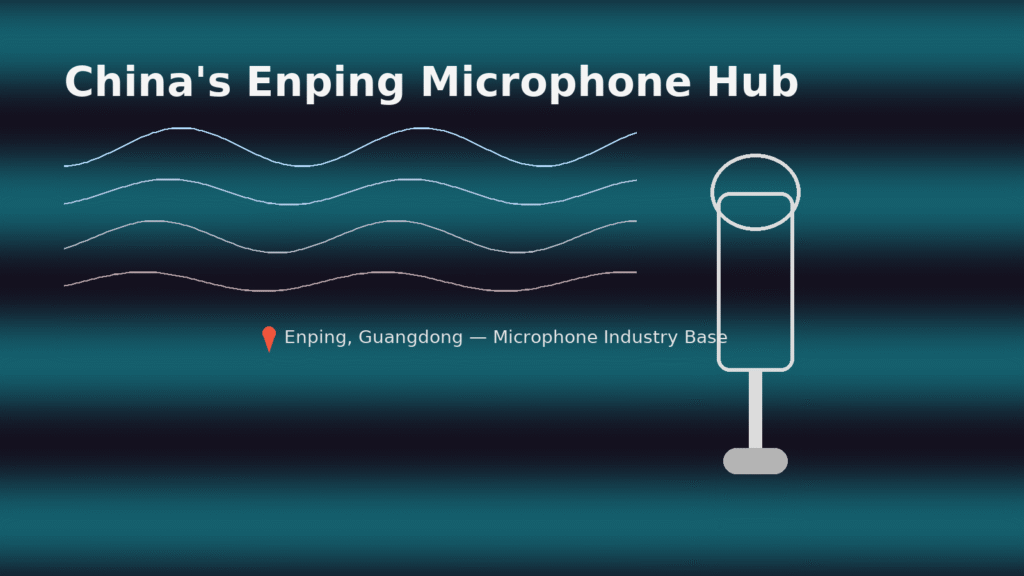If you’ve ever bought an affordable wireless mic for a church, a USB mic for streaming, or a conference microphone set, there’s a good chance it started life in Enping, Guangdong. This county-level city under Jiangmen has spent two decades building one of China’s densest clusters for microphones and related pro-audio gear. Walk any of the industrial parks and you’ll find a tight chain of metal processing, plastic injection, PCB assembly, RF tuning, acoustic testing, and final QC—often within a few city blocks. That proximity keeps development cycles fast and export pricing sharp.
What Enping Makes
The local portfolio is broad: handheld and headset wireless systems, UHF/2.4 GHz/5.8 GHz digital sets, gooseneck conference mics, boundary mics, lavaliers, instrument packs, karaoke systems, and a fast-growing line of USB and RGB “gaming” microphones with onboard DSP. ODM (design + manufacturing) is common; many buyers arrive with a target spec and private-label branding, then choose capsules, RF modules, and housing molds from proven libraries to hit their market price.
Why Exporters Choose Enping
For overseas buyers, the value is speed plus predictable compliance. Factories are used to CE, FCC, and RoHS documentation and will quote with test reports on hand or include third-party labs in the lead time. Typical MOQs run from 100–500 sets for private labels, with white-label options even lower. Production lead time sits around 20–35 days for repeats, longer for new molds. Export logistics are straightforward: cartons truck to Yantian or Nansha for FCL/LCL, and urgent sample runs move via Shenzhen or Guangzhou airports. Many suppliers quote FOB Shenzhen; EXW Enping is common for consolidations.
Quality & Cost Control
Enping’s advantage isn’t just low labor; it’s the density of audio-specific know-how. RF engineers who tune front-end filters, technicians who align squelch thresholds by ear, and aging rooms set up for long-duration battery and interference tests—these are routine. Costs stay competitive because parts (capsules, grills, shock mounts, SMT) are sourced from neighbors rather than shipped cross-province. That ecosystem allows small customizations—a different grille pattern, a revised capsule, or a new colorway—without resetting your budget.
Sourcing Tips for New Buyers
- Ask for exact RF specs (deviation, sensitivity, spurious emissions) and request a live video of range/anti-interference tests.
- Confirm local frequency plans for your market; many makers can pre-program compliant bands and supply a frequency table.
- For USB mics, check driver-free operation and noise floor measurements; ask for raw audio samples, not only polished demos.
- Lock down packaging dimensions early—small carton tweaks can reduce air-freight costs meaningfully.
- If you need e-commerce readiness, request UPC/EAN assignment, lifestyle photos, and an instruction manual in your brand voice.
Who Enping Is Right For
Distributors building private labels, integrators serving houses of worship and education, and marketplace sellers who need reliable replenishment all benefit from the city’s cadence. If you require boutique studio microphones or patented RF stacks, you’ll still find options here, but the sweet spot remains feature-rich, value-priced systems that move in volume.
Bottom Line
Enping combines manufacturing depth with export fluency. You get short development loops, flexible branding, and clean paperwork to clear customs. For microphone and entry-to-mid pro-audio lines, it’s one of the most efficient places on the map to turn a spec sheet into sellable inventory.
